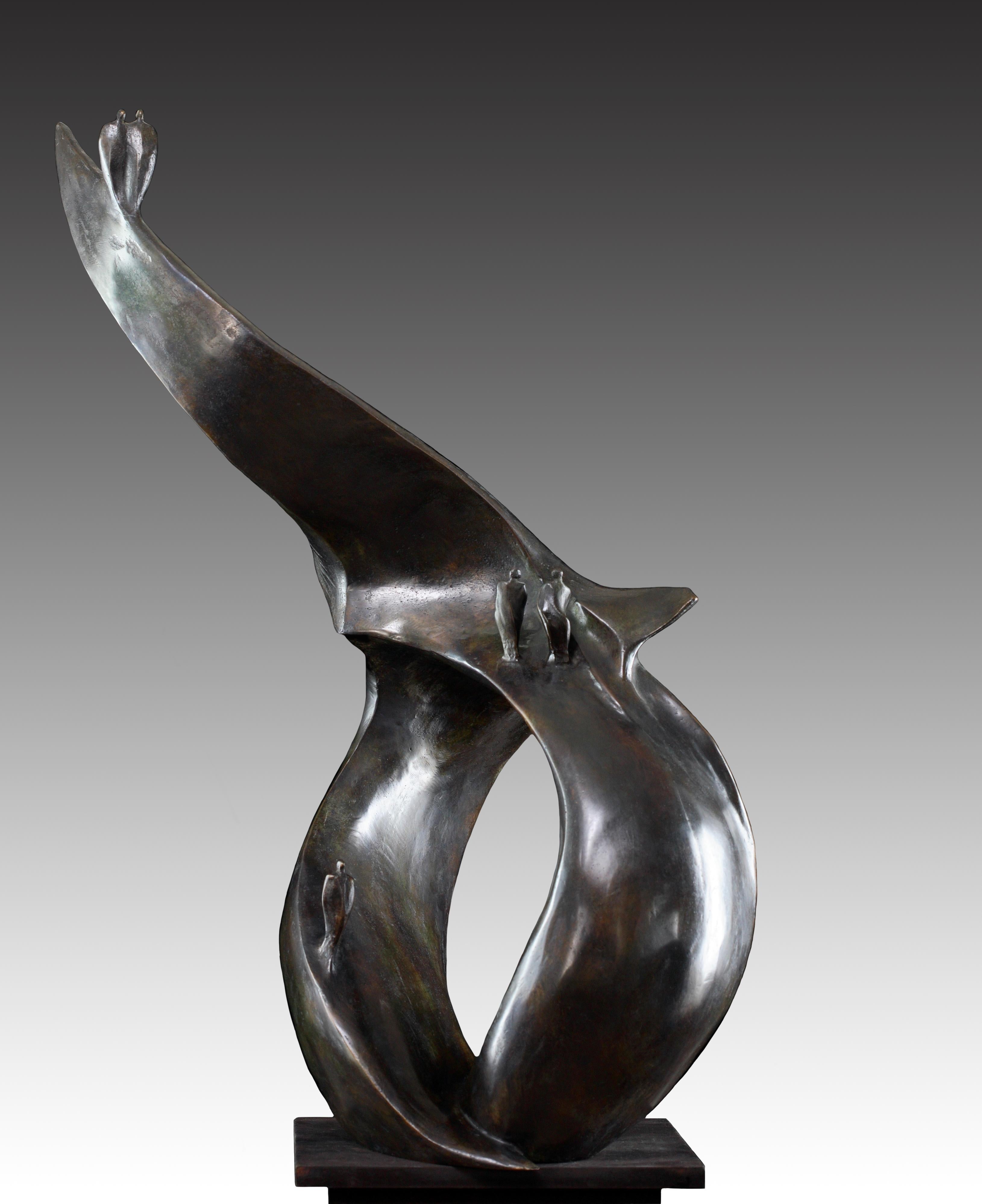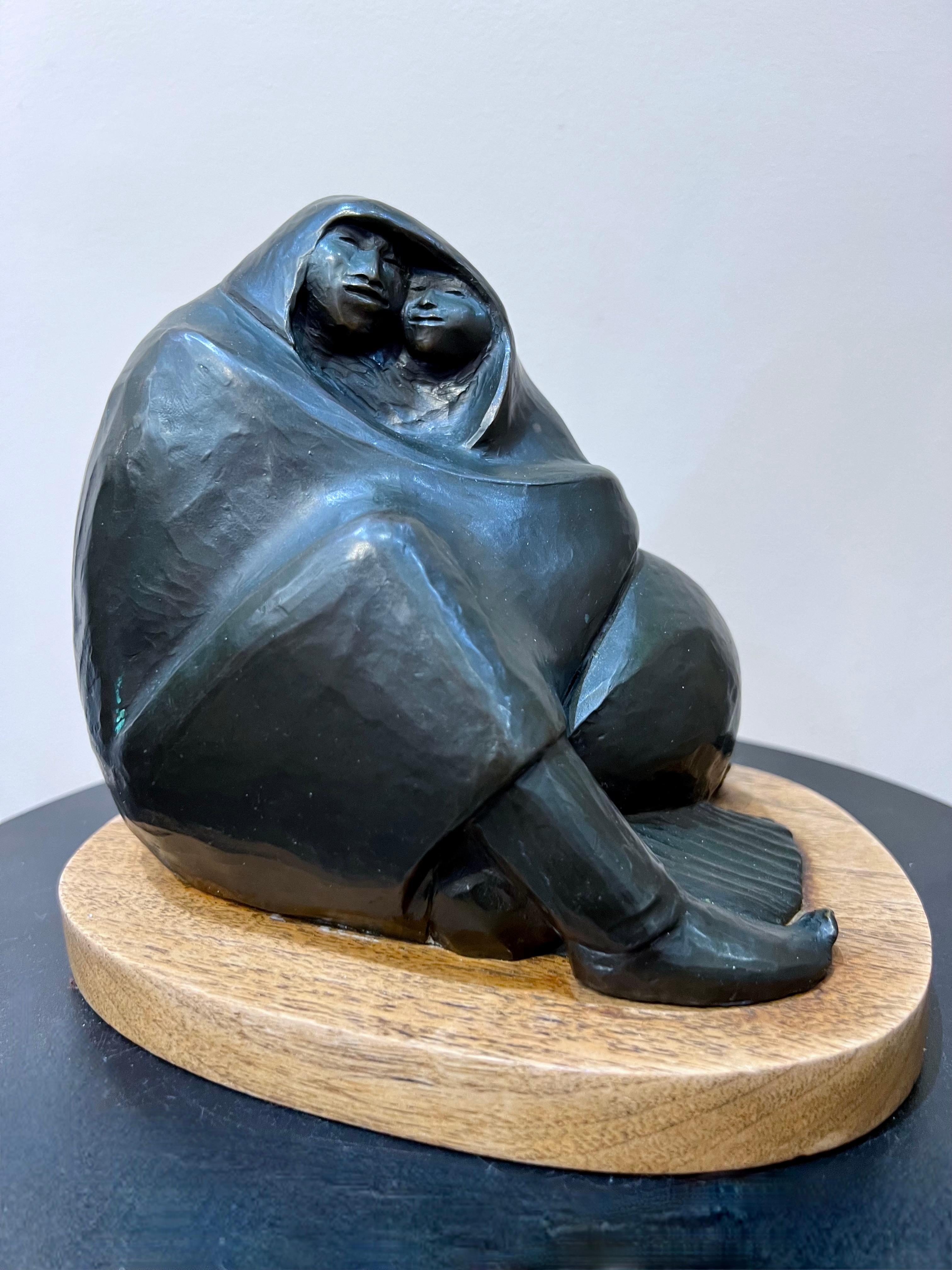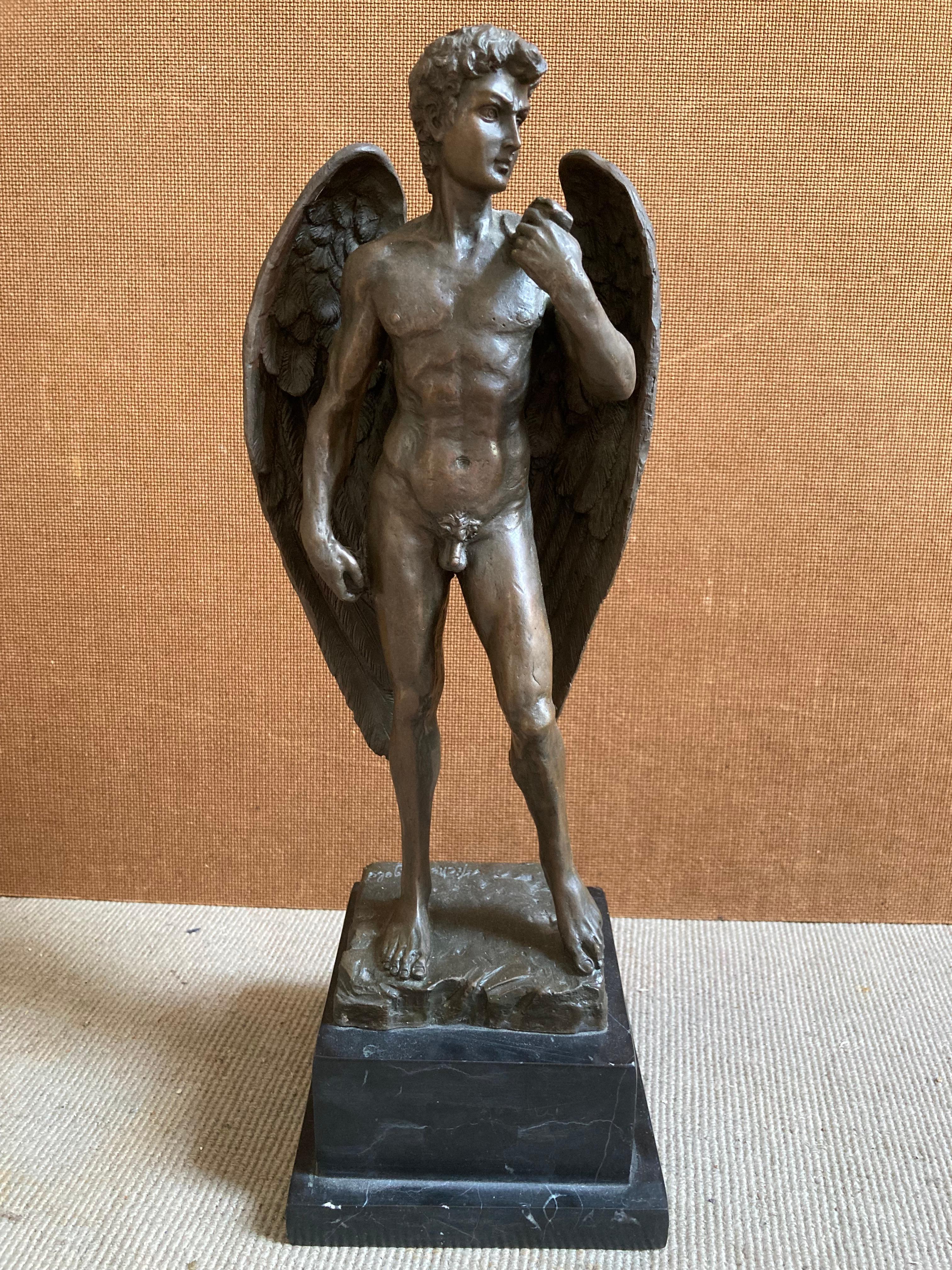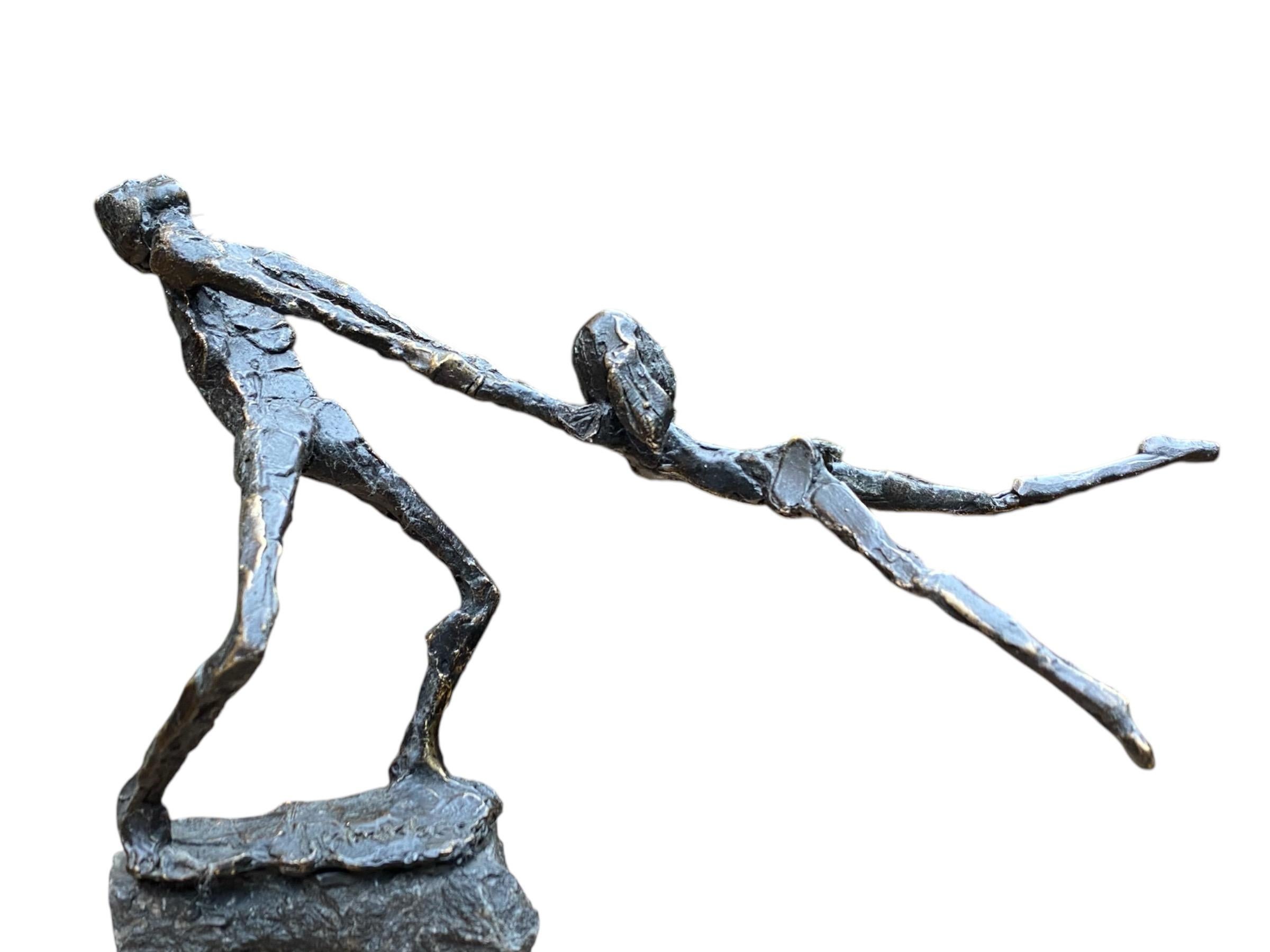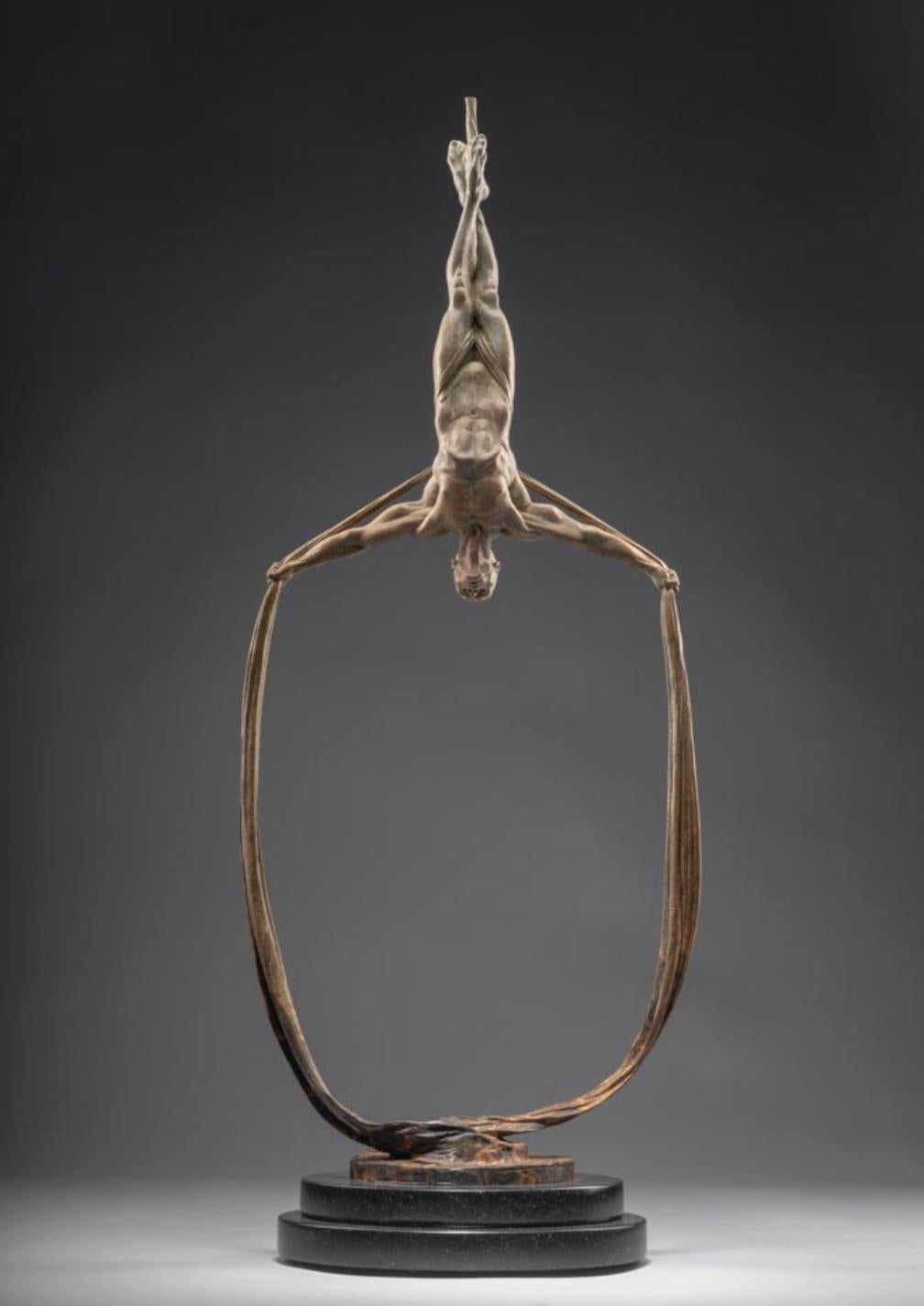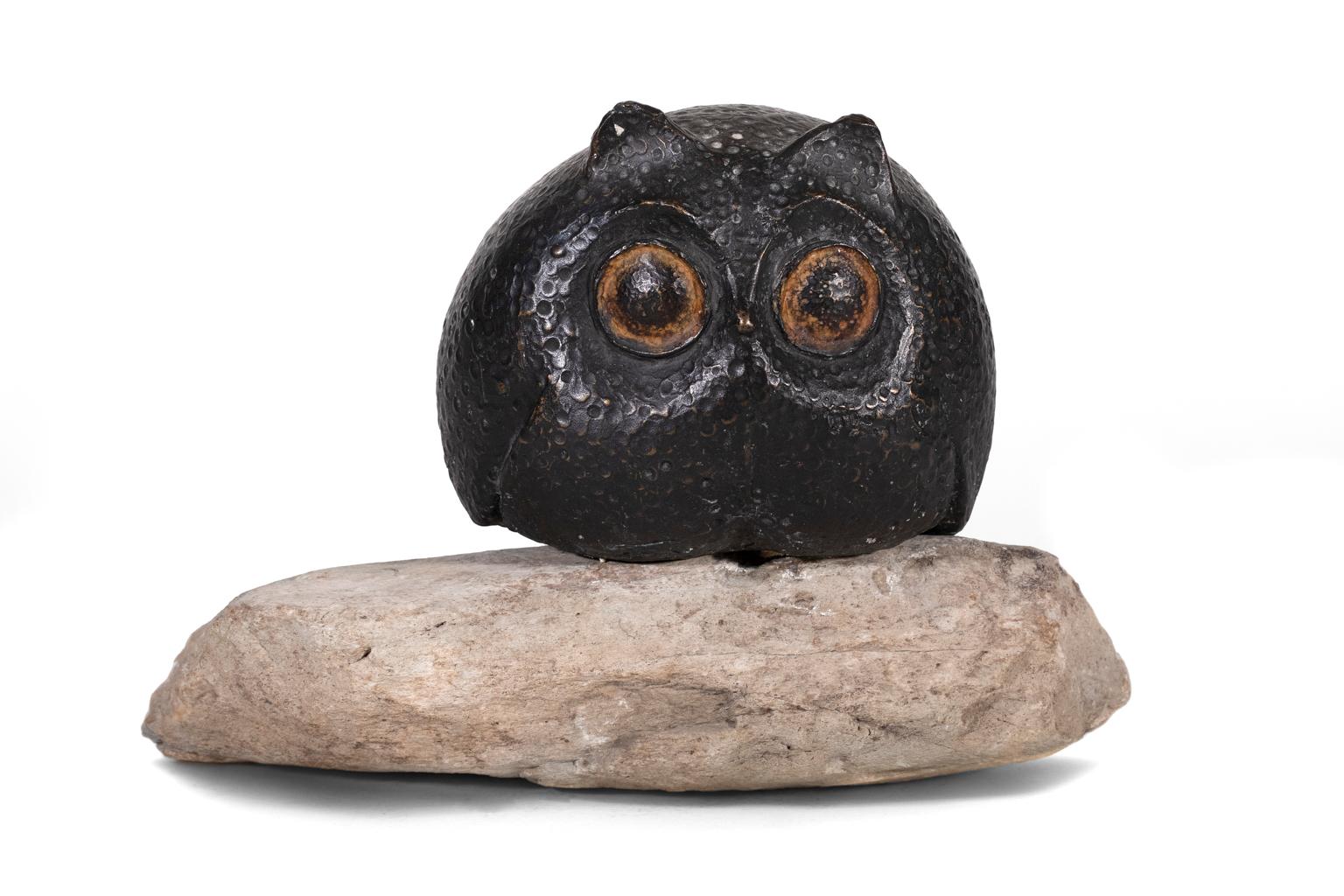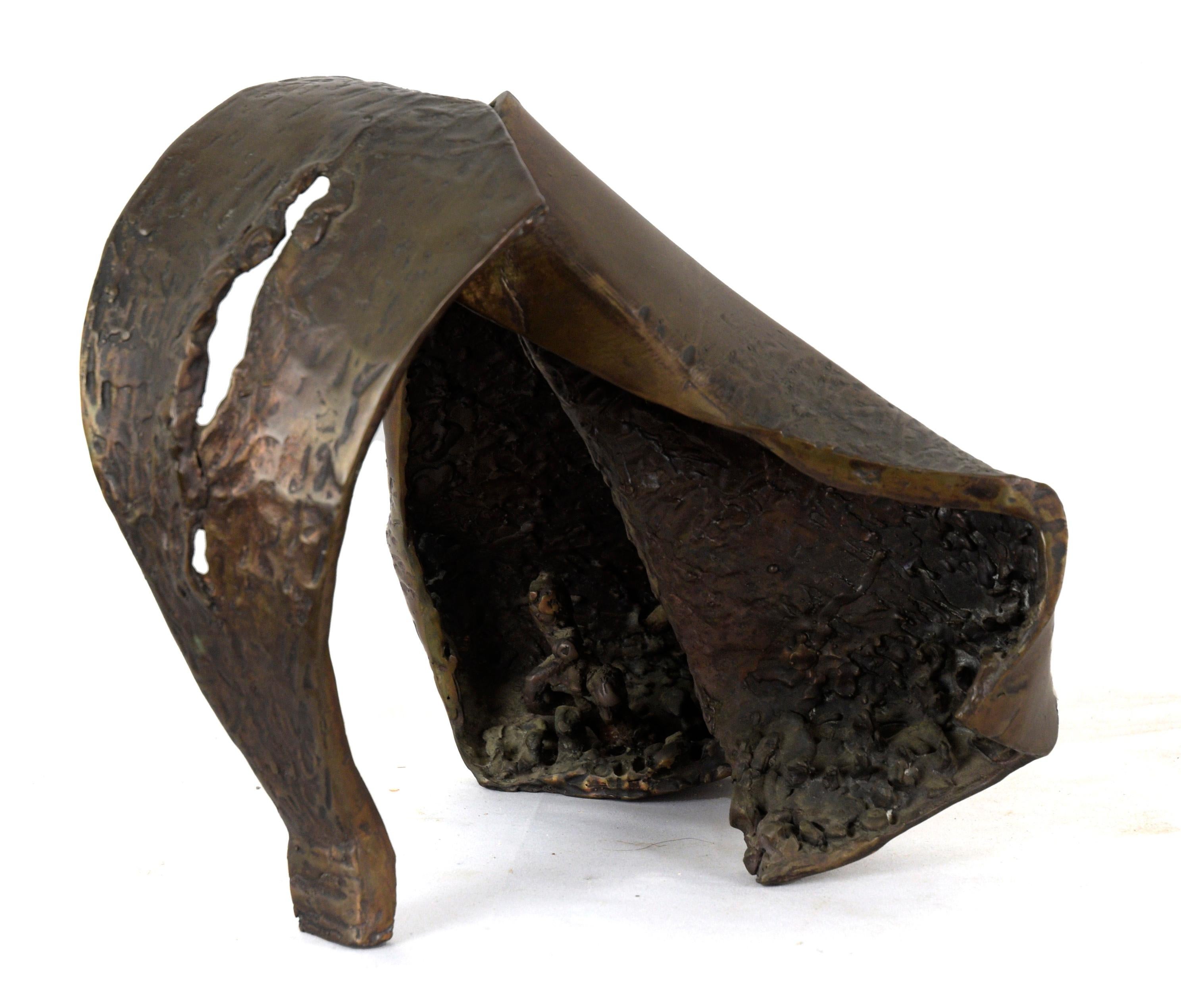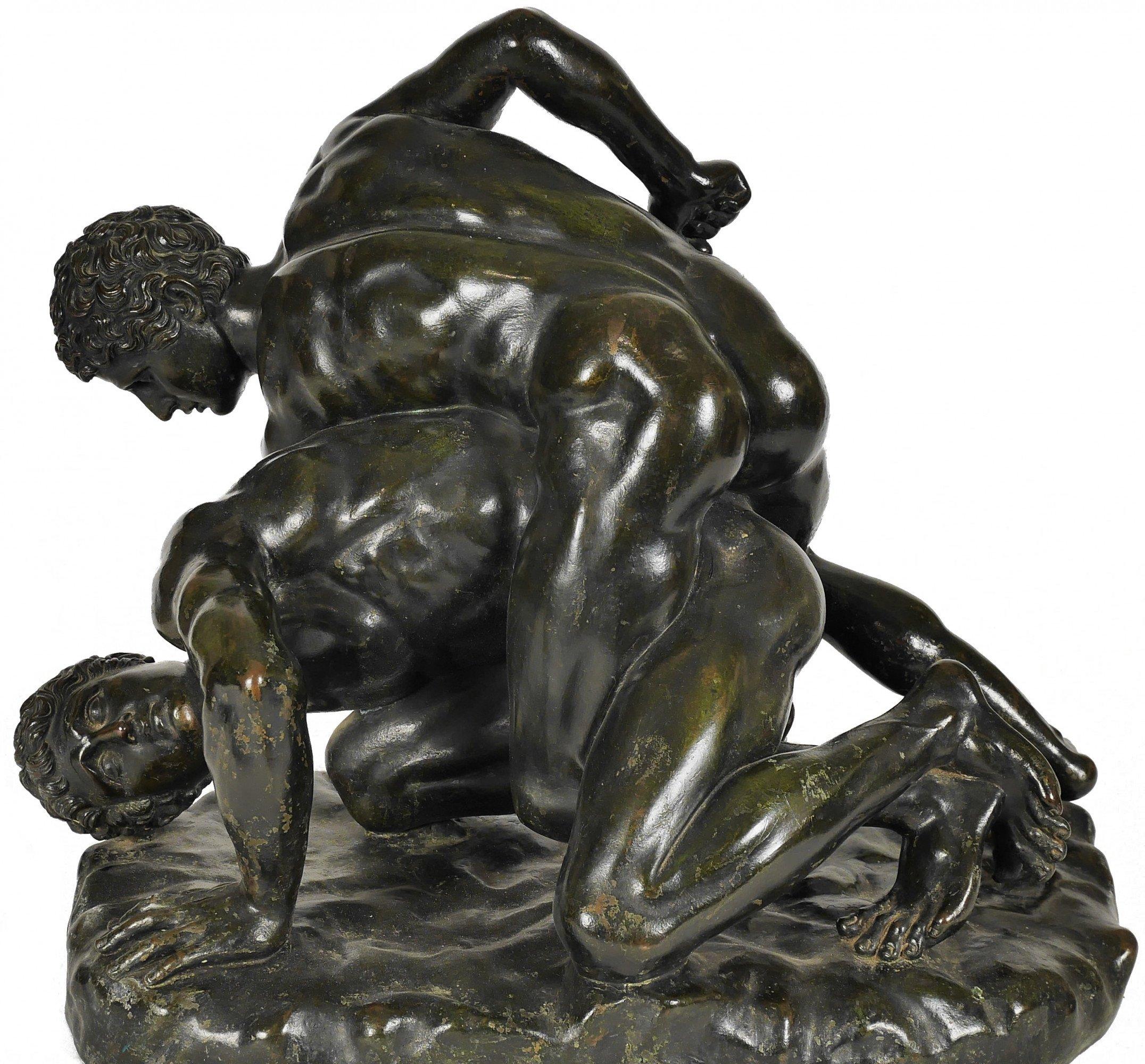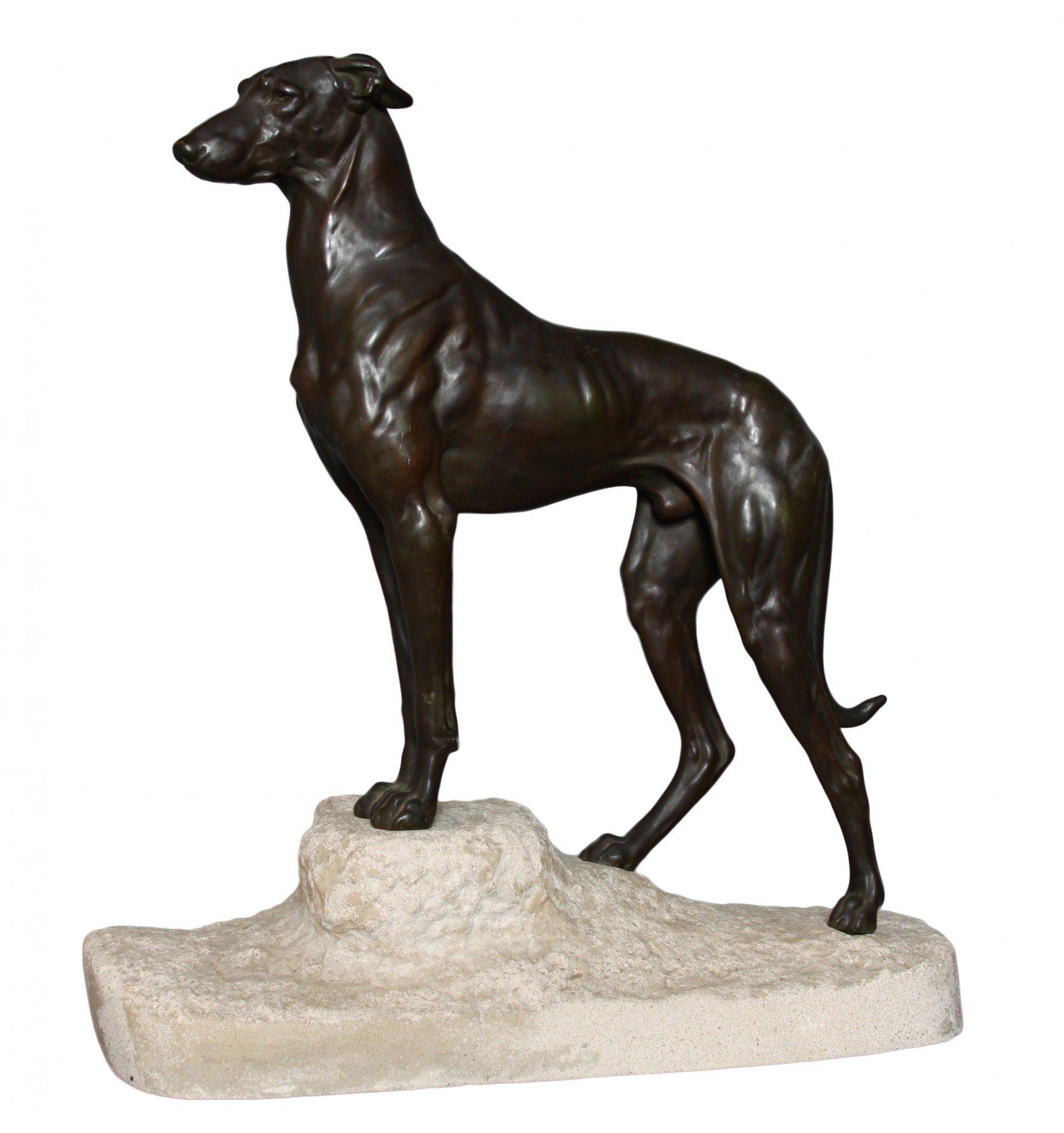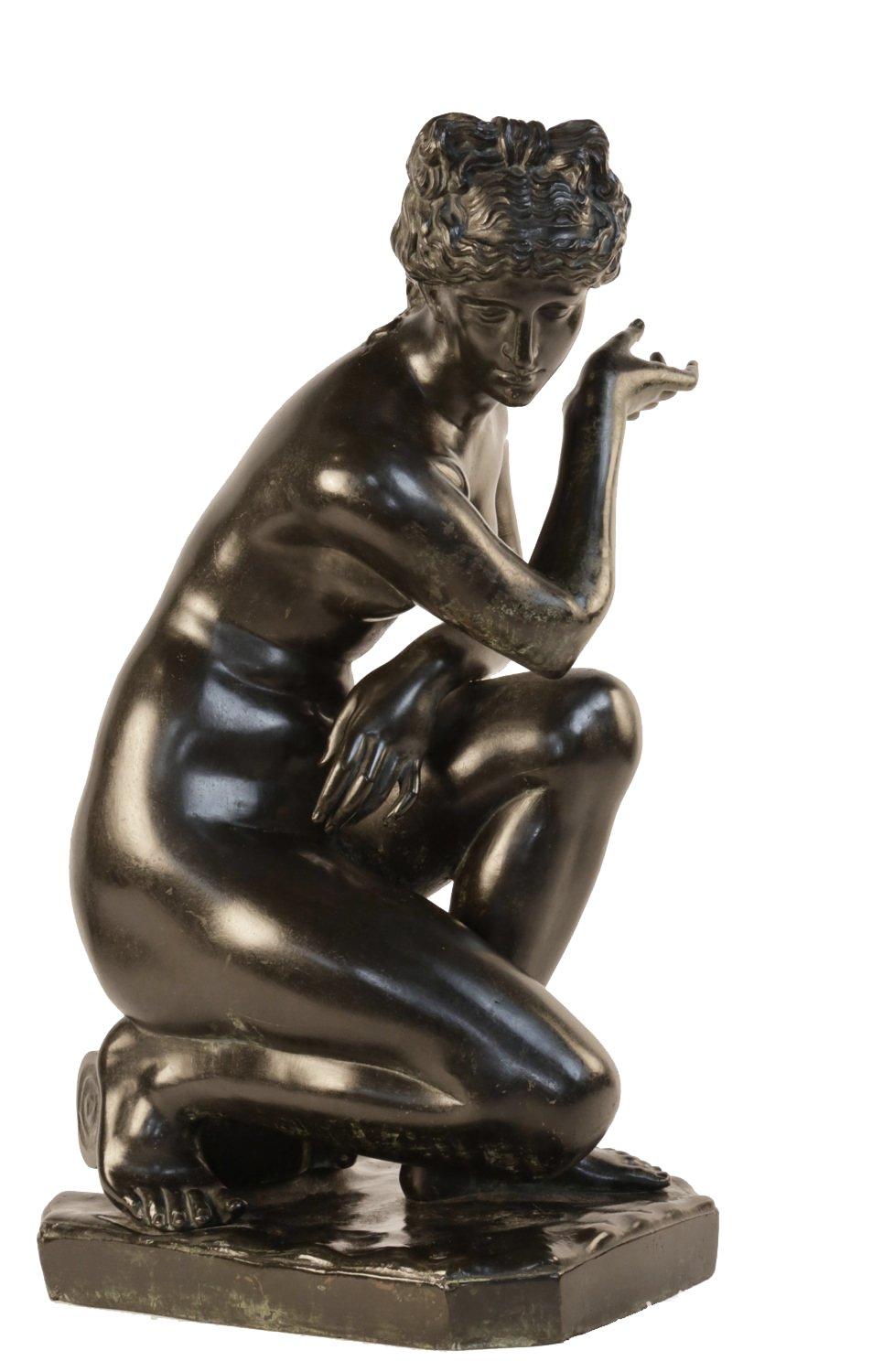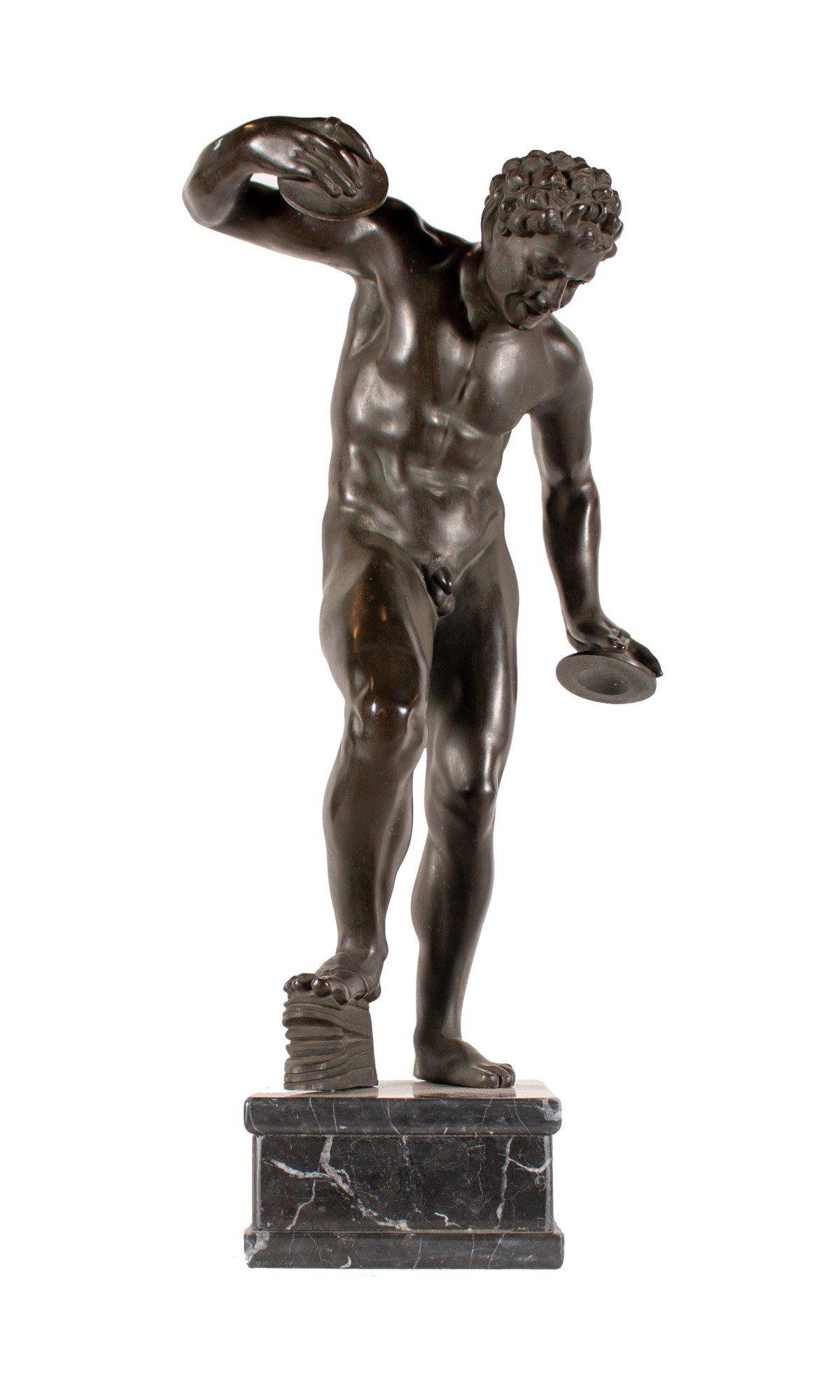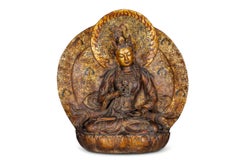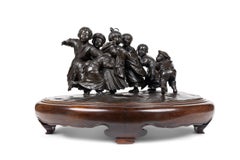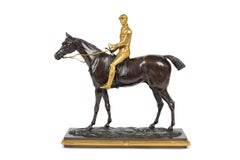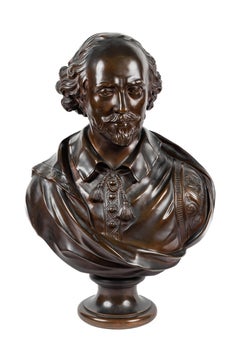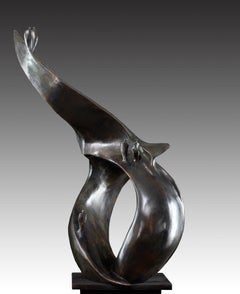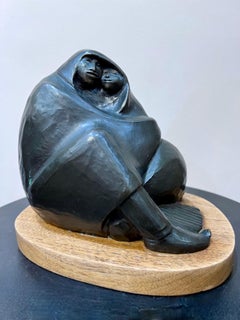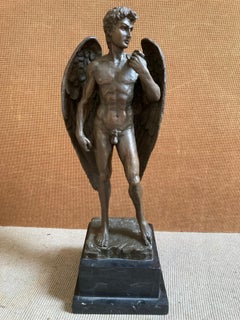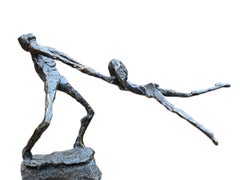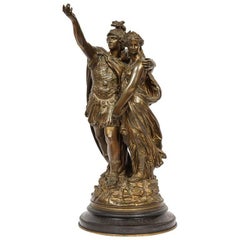
J. L. Gregoire, A French Bronze Figural Group "Orestes & Iphigenia"
Want more images or videos?
Request additional images or videos from the seller
1 of 21
Jean Louis GrégoireJ. L. Gregoire, A French Bronze Figural Group "Orestes & Iphigenia"1880
1880
About the Item
- Creator:Jean Louis Grégoire (1840 - 1890)
- Creation Year:1880
- Dimensions:Height: 18 in (45.72 cm)Width: 12 in (30.48 cm)Depth: 12 in (30.48 cm)
- Medium:
- Period:
- Condition:
- Gallery Location:New York, NY
- Reference Number:1stDibs: LU115124490111
About the Seller
5.0
Vetted Professional Seller
Every seller passes strict standards for authenticity and reliability
Established in 1980
1stDibs seller since 2019
13 sales on 1stDibs
Authenticity Guarantee
In the unlikely event there’s an issue with an item’s authenticity, contact us within 1 year for a full refund. DetailsMoney-Back Guarantee
If your item is not as described, is damaged in transit, or does not arrive, contact us within 7 days for a full refund. Details24-Hour Cancellation
You have a 24-hour grace period in which to reconsider your purchase, with no questions asked.Vetted Professional Sellers
Our world-class sellers must adhere to strict standards for service and quality, maintaining the integrity of our listings.Price-Match Guarantee
If you find that a seller listed the same item for a lower price elsewhere, we’ll match it.Trusted Global Delivery
Our best-in-class carrier network provides specialized shipping options worldwide, including custom delivery.More From This Seller
View AllA Monumental Gilt-Lacquered Bronze Ornamental Sculpture of Vajravidarana
Located in New York, NY
A Monumental Gilt-Lacquered Bronze Ornamental Buddha Sculpture of Vajravidarana:
A Masterpiece of Sino-Tibetan Craftsmanship, Late 19th Century, Qing Dynasty
This monumental gilt-lacquered bronze ornamental sculpture of Vajravidarana is an extraordinary and commanding piece of art, showcasing the pinnacle of Sino-Tibetan craftsmanship from the late 19th century. The figure of Vajravidarana, a powerful purification deity in Tibetan Buddhism, is meticulously sculpted to embody both spiritual authority and artistic excellence.
Vajravidarana is primarily known for his role in removing spiritual impurities and negativities. Unlike other deities associated with wisdom or compassion, Vajravidarana’s function is centered on purification and healing. He is typically depicted holding a vajra and a bell, symbolizing the cutting away of delusions and the resonance of divine truth. In this striking sculpture, Vajravidarana is shown holding a vishva vajra (the double vajra), a unique and powerful variation of the traditional iconography, which signifies ultimate protection and the dispelling of negative karma.
Vajravidarana: The Supreme Purifier and Protector
Vajravidarana is revered in Tibetan Buddhism as the deity of spiritual purification, called upon to cleanse practitioners of defilements and negative influences. His vajra represents the indestructibility of truth, while his bell signifies the wisdom that resonates through purification rituals. In this sculpture, the presence of the vishva vajra, or double vajra, enhances his association with supreme protection, ensuring the destruction of all spiritual obstacles and afflictions.
The figure’s powerful yet composed expression conveys a sense of unwavering resolve and divine authority. His posture, along with the carefully sculpted details of his robes and ornaments, highlights his function as a guardian against impurity. The inclusion of the vishva vajra rather than the usual single vajra reinforces his role as a supreme protector, capable of dispelling all forms of negativity and restoring balance.
Symbolism of the Mantras and Aureole:
Unlike deities that embody wisdom through duality, Vajravidarana’s iconography is centered on purification and exorcism. The aureole surrounding him is inscribed with sacred purification mantras rather than depictions of a consort. These mantras emphasize his function as a remover of obstacles and impurities, reinforcing his role in Buddhist healing rituals.
The presence of the sacred inscriptions elevates the sculpture’s spiritual significance, making it a focal point for meditation and ritual purification. Practitioners often visualize Vajravidarana radiating purifying light, dissolving afflictions and negative karma. This theme is mirrored in the sculptural repetition of the purification symbols on the aureole, reinforcing the deity’s role as a divine cleanser.
Gilt-Lacquered Bronze: The Artistry of Sino-Tibetan Metalwork:
The craftsmanship of this monumental figure reflects the expertise of late 19th-century Sino-Tibetan metalwork, where traditional Tibetan themes were infused with Chinese artistic sensibilities. Cast in bronze and finished with a rich gilt lacquer, the statue has an otherworldly glow, giving it an ethereal, almost divine presence. The gilding process—applied with exceptional skill—gives the sculpture a striking luminosity that enhances the fine details of the facial features, flowing robes, jewelry, and other elements of the deity’s attire.
The technique employed to create this figure speaks to the high level of craftsmanship that flourished during the late Qing Dynasty and early modern Tibetan art. The ornate details of the robes and the fine texture of the sculpture highlight the exceptional skill of the artisans who brought this work to life. The use of gold and lacquer not only reflects the preciousness of the sculpture but also its spiritual significance as an object meant to inspire reverence and meditation.
An Ornamental Sculpture of Monumental Scale:
Unlike smaller devotional objects, this sculpture is designed as an ornamental masterpiece, intended to make a grand visual and spiritual statement. Its monumental size allows it to dominate any space, offering a commanding presence that is both physically and symbolically impressive. In Buddhist practice, large sculptures of this nature are often placed in temples or meditation halls, where their imposing size and serene presence would encourage contemplation and devotion.
The grand scale of the statue further amplifies the spiritual power it is meant to convey. As a representation of Vajravidarana, it is not only a physical object of beauty but also a conduit for meditation, purification, and enlightenment. The scale of the sculpture also emphasizes the divine stature of the deity, highlighting his importance in the Buddhist tradition as the ultimate force for spiritual cleansing and protection.
Provenance:
Acquired in China in circa 1900
1905 Private Buddhist Temple, Northeast, USA
Private Sale
Solomon Treasure...
Category
19th Century Figurative Sculptures
Materials
Bronze
A Large and Exceptional Japanese Meiji Period Tokyo School Bronze Sculpture
Located in New York, NY
Presenting an extraordinary Large and Exceptional Japanese Meiji Period Tokyo School Bronze Sculpture depicting a delightful ensemble of six energe...
Category
19th Century Figurative Sculptures
Materials
Bronze
A Rare Gilt and Patinated Bronze Jockey on A Horse, circa 1875
By Isidore Jules Bonheur
Located in New York, NY
Isidore-Jules Bonheur (French, 1827–1901)
A Rare Gilt and Patinated Bronze Jockey on A Horse, circa 1875.
Introducing a truly exceptional and highly so...
Category
19th Century Figurative Sculptures
Materials
Bronze
A Monumental French Patinated Bronze Bust of William Shakespeare, after Houdon
By F. Barbedienne Foundry
Located in New York, NY
A Monumental French Patinated Bronze Bust of William Shakespeare, after Houdon, by F. Barbedienne Foundry, circa 1870.
Masterfully and realistically sculpted in solid bronze, this b...
Category
19th Century Figurative Sculptures
Materials
Bronze
Emile-Edmond Peynot "Albaya' El Tunsi" The Tunisian Merchant Bronze, 1883
Located in New York, NY
Émile-Edmond Peynot, (French, 1850 -1932)
An exceptional, exquisite and rare orientalist bronze sculpture titled Albaya' El Tunsi / The Tunisian Merchant / The Arab rifleman.
Dep...
Category
19th Century Figurative Sculptures
Materials
Bronze
Rare Patinated Bronze Sculpture of Benjamin Franklin, by A. Carrier-Belleuse
By Albert-Ernest Carrier-Belleuse
Located in New York, NY
Albert-Ernest Carrier-Belleuse (France, 1824-1887)
A rare seated bronze statue of Benjamin Franklin holding his walking stick and hat, with a book in his ri...
Category
19th Century Academic Figurative Sculptures
Materials
Bronze
You May Also Like
Cheminement - Bronze Sculpture, Interior Sculpture, Belgian Artist, Woman Artist
By Isabelle Thiltgès
Located in New York, NY
A powerful meditation on the human journey, Cheminement by the late Belgian sculptor Isabelle Thiltgès captures a procession of stylized figures asce...
Category
Early 2000s Contemporary Figurative Sculptures
Materials
Bronze
Apache Lovers, bronze, sculpture, Allan Houser, figurative, limited edition
By Allan Houser
Located in Santa Fe, NM
Apache Lovers, bronze, sculpture, Allan Houser, figurative, limited edition
Category
1980s Contemporary Figurative Sculptures
Materials
Bronze
Winged David (Bronze), ex. Daniel Glaser Estate (New Orleans)
By Michelangelo
Located in New Orleans, LA
A tabletop-sized solid bronze casting of Michelangelo's "Winged David", on a solid marble base. You can see his giant-killer sling "slung" over his shoulder. Fine detail. This came out of a collection of neoclassical grand tour souvenirs, owned by collector Daniel Glaser of New Orleans, Louisiana (from his estate). Back in the day, wealthy travelers in Europe often purchased sculptures and other mementos of the sites they visited. We have several other pieces from this collection in addition to this, including "Discobolus" and a fine gladiator with lance. Proudly presented by Guy Lyman Fine Art...
Category
Early 20th Century Figurative Sculptures
Materials
Bronze
Slingeren Swirling Swinging Bronze Sculpture Dancing Figurative In Stock
Located in Utrecht, NL
Slingeren Swinging Bronze Sculpture Figurative In Stock
About Jits Bakker (1937-2014)
Sculptor, painter, watercolorist, drawer, glass artist, silversmith, graphic artist. The artist...
Category
21st Century and Contemporary Contemporary Figurative Sculptures
Materials
Bronze
Price Upon Request
Free Shipping
Transcendance, Atelier
By Richard MacDonald
Located in Laguna Beach, CA
As with Richard MacDonald’s entire Cirque series, Transcendance has many layers of metaphor and meaning to challenge and intrigue viewers. Transcendance is a striking example of Rich...
Category
21st Century and Contemporary Contemporary Figurative Sculptures
Materials
Bronze
Price Upon Request
"Owl" Bronze Sculpture, Caricature, Rich Dark Brown Surface
Located in Detroit, MI
The bronze sculpture "Owl" is an exaggerated rendition of an owl that emphasizes the bird's most prominant characteristics - a big fluffy round body and large unblinking eyes making it a charicature of the bird. It is very touchable and calls for one to pet its rounded back. Tom Brun, the sculptor and zookeeper, is well-known for his wood, stone, marble, ceramics and ivory sculptures. One of them, a large hippopotamus, carved from walnut wood travelled the world in the State Department collection.
It is said that Tom would often go into a house and pick up one of his sculptures and say that it was unfriendly – meaning that it had not been handled enough. Morley Driver has said of Brun in a newspaper article from the 1950’s “In Any Animal He Sees Beauty”: No one who has ever seen a Tom Brun hippopotamus will ever again think of it as ugly or ungainly, meaning that the artist not only gives you beauty but teaches you to see it. Tom has said: “Small pieces are like a proverb – a gem of meaning that one can dissect.” They are meant to be picked up, caressed and held. This owl, too, seems destined to be caressed.
Brun was born in England in 1913. A few years after the end of World War I his father moved the family in 1919 to Detroit, Michigan. In 1935 at age 23, he officially became a U.S. citizen. He served in the army during World War II for five years and upon discharge and at the age of 36 took advantage of the GI Bill and applied for admission to Society of Arts and Crafts (now known as the College for Creative Studies) where he was gladly accepted.
While at Arts and Crafts his instructors and established artists such as Sarkis Sarkisian, John P. Foster, Morris Brose, Richard Koslow, Patricia Burnett, Lloyd and Renee Radell...
Category
Mid-20th Century Modern Figurative Sculptures
Materials
Bronze
